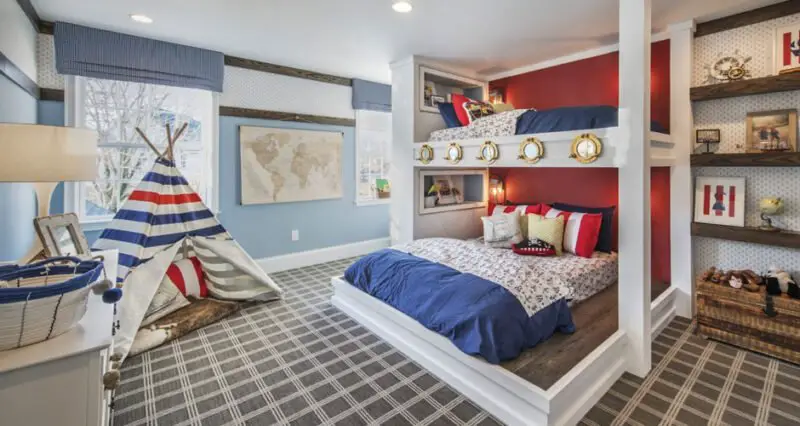
Designing a bedroom for multiple children can be a rewarding yet challenging endeavor. With careful planning, creativity, and consideration of each child’s needs and preferences, you can create a space that fosters harmony, promotes individuality, and encourages sibling bonding. Whether your children are sharing a room out of necessity or preference, here’s a comprehensive guide to help you design the perfect bedroom for multiple kids.
1. Assessing Space and Layout
Before diving into the design process, assess the available space and layout of the room. Consider factors such as room dimensions, natural light sources, and any architectural features that may impact the design. Determine whether the room can accommodate separate sleeping areas for each child or if a shared sleeping space is more practical. If a shared space is more appropriate, consider looking into bunk beds. You can even find a triple bunk bed for your children so every child has their own sleeping space while not compromising on the space in the room. Additionally, consider the age and gender of the children, as well as their individual personalities and preferences.
2. Establishing Zones for Each Child
To promote a sense of ownership and privacy, establish distinct zones within the bedroom for each child. Allocate specific areas for sleeping, studying, playing, and storage, allowing each child to have their own designated space. This can be achieved through the strategic placement of furniture, room dividers, or decorative elements that visually delineate each child’s territory while maintaining an overall cohesive design.
3. Fostering Individuality through Personalization
While sharing a bedroom, it’s important to create opportunities for each child to express their individuality and personal style. Allow them to choose elements such as bedding, wall decor, and accessories that reflect their interests, hobbies, and personality. Whether it’s a favorite color, theme, or decorative accent, incorporating personalized touches will make the room feel uniquely theirs and foster a sense of ownership and pride.
4. Promoting Collaboration and Compromise
Sharing a bedroom can teach children valuable lessons in collaboration, compromise, and conflict resolution. Encourage open communication and involve children in the design process, allowing them to voice their preferences and concerns. Establish clear boundaries and guidelines for sharing space, resolving conflicts, and respecting each other’s belongings. Incorporate collaborative elements such as shared workstations, reading nooks, or creative play areas where children can engage in activities together and bond as siblings.
5. Creating a Balanced Aesthetic
When designing a shared bedroom for multiple children, strive for a balanced aesthetic that reflects the collective tastes and interests of all occupants. Choose a cohesive color palette and theme that appeals to both genders and complements the overall design of the room. Incorporate elements of symmetry and balance in furniture arrangement and decor placement to create visual harmony. Encourage children to contribute their ideas and preferences while maintaining a cohesive design that unifies the space.
To Wrap Up
Designing the perfect bedroom for multiple children requires careful planning, creativity, and consideration of each child’s needs and preferences. By establishing distinct zones, maximizing storage solutions, fostering individuality, promoting collaboration, and creating a balanced aesthetic, you can create a space that fosters harmony, promotes individuality, and encourages sibling bonding. With a thoughtful approach and attention to detail, you can design a shared bedroom that meets the unique needs of each child while creating a nurturing and inspiring environment for them to grow and thrive together.

